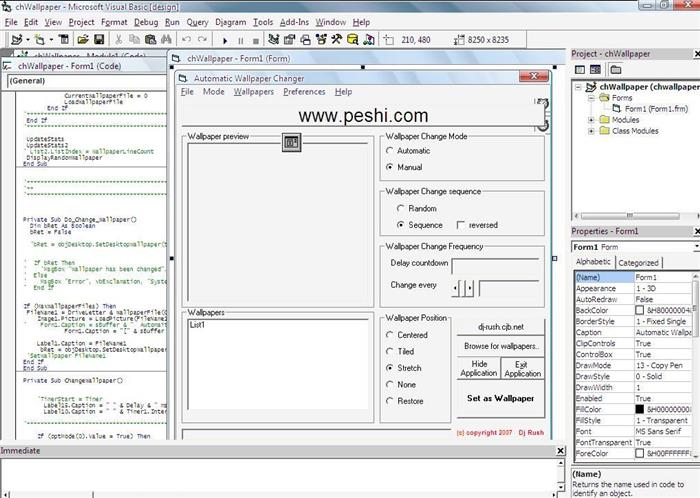

At first, Cooper was upset with Microsoft’s decision and argued against it.
#Visual basic 6.0 professional#
Microsoft decided to delay Ruby and convert it from a shell construction set for all users to a visual programming language for professional developers by adding QuickBasic.
#Visual basic 6.0 windows#
The original intention was to ship Ruby with Windows 3.0 as a more powerful shell, but Microsoft instead decided to use the OS/2 shell, which Microsoft owned at the time from its deal with IBM. In a few months the deal was done, Tripod became Microsoft’s “Ruby,” and Cooper assembled a team of engineers to deliver a commercial product. Gates declared that Tripod was “cool” and would have significant impact across Microsoft’s entire product line.

Visionary that he is, the 32-year-old billionaire immediately saw Tripod’s potential. There was little interest until March 1988 when Cooper showed a prototype to Microsoft CEO Bill Gates.

There would be a palette of tools and controls, which users could drag & drop onto forms to create their custom shell.Ĭooper began shopping the product around Silicon Valley seeking a publisher. After initial testing, Cooper realized that “every user would need their own personal shell, configured to their own needs and skill levels.” The idea of a “shell construction set” was born. In 1987, Cooper was a director at Coactive Computing Corporation where he developed “Tripod,” an improved shell/desktop for the fledgling Windows operating system. This support is unlikely, however, and VB’s reign as “programming language for the masses” is over.Īlan Cooper is widely regarded as the father of Visual Basic.
#Visual basic 6.0 upgrade#
And there is a concerted effort including a web petition to convince Microsoft to support and upgrade the last “simple” version of Visual Basic, VB6. Perhaps next-generation Web development environments like Popfly and Silverlight will fill the gap left by VB.

The result is an expected drop in market share. NET programming languages, especially the superior and more popular C#. As such, there’s little to positively distinguish VB from the other. The problem is simply that when Visual Basic became VB.NET, it became a “real” programming language for trained developers, no longer the layman’s “Application Construction Kit” of its original vision. Much has been written lately about the fall of Visual Basic, triggered by an Evans Data survey indicating that VB use has dropped 35% in the past year, and other language surveys show VB falling behind its brother C# and market leader Java. Developers expressed emotions ranging from frustration to anger. That caused rumblings that continue today. Back in 2002, Microsoft announced that the language was to be replaced by something new, different and incompatible. Yet Microsoft took this asset of incalculable value and apparently tossed it aside. Microsoft had perhaps the largest number of developers in the world hooked on a language which in turn was hooked to Windows. The death knell for Visual Basic is premature, but it’s true that VB has deviated from its original vision as an “Application Construction Kit” for the masses and has lost significant market share as a result.


 0 kommentar(er)
0 kommentar(er)
